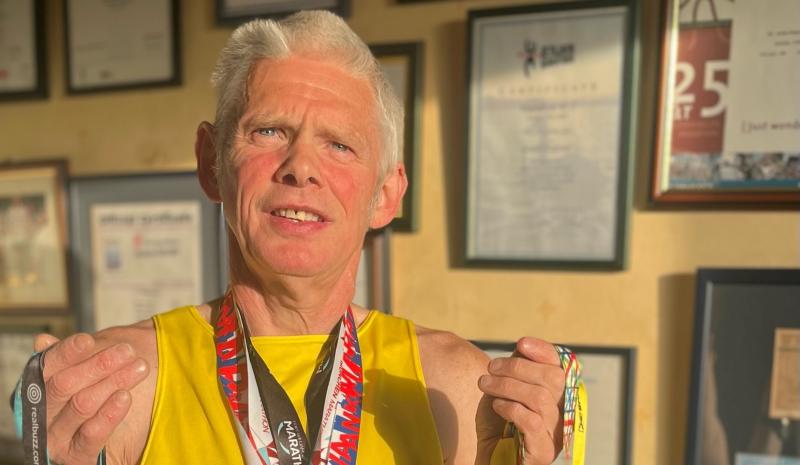News
Wild Atlantic Way delivers tourist boom to West region

This year is set to be the busiest tourism year for overseas visitors since records began with the Wild Atlantic Way drawing tourists west earlier in the season and encouraging them to stay longer.
Official figures from the Central Statistics Office (CSO) show the best January to July period for foreign tourists, with more than 5.4 million arrivals, representing an increase of almost 13% – 612,400 additional overseas visitors when compared with the first seven months of 2015.
July alone recorded more than one million arrivals from abroad.
There have been increases across the board from all regions of the world, with an 8% rise in trips from Britain, reaching just over one million. Visits from other European countries also tipped just over the million mark.
Americans are increasing their number of trips to Ireland the most, with a 13.3% increase in those who travelled this year.
While figures are not broken down regionally by the CSO for many months, all anecdotal evidence points to a very strong year so far, underlined Fiona Monaghan, head of the Wild Atlantic Way in Fáilte Ireland.
“Just past the January blues there was an increase in visitor numbers and September and October are looking very, very strong,” she told the Connacht Tribune.
“There was a mix of domestic and overseas tourists – the international visits started arriving from March and April, so they’re coming earlier and staying longer than ever before.”
The big jump in visitors west of the Shannon is down to a combination of elements which all aligned for 2016 – the Wild Atlantic Way touring route is now luring independent tourists to travel longer distances in hired cars; there has been an increase in air access from key markets and the favourable exchange rates is drawing more Americans.
“We’re cautiously optimistic that 2016 will see the largest number of overseas visitors ever to the west with national figures showing tourist numbers will break the eight million mark for the first time since 2008,” exclaimed Fiona.
“We’re finding that tourists are booking their first and last nights but are not committing to bed nights in between – they want to be fluid and see what appeals to them while on the Wild Atlantic Way.
“They’re spending two to three nights in Galway and using it as a base to see the Burren, Connemara and the Aran Islands. The challenge we have is to get them to stay in more peripheral areas and during the shoulder months.”
While welcoming the continuing growth in visitors, Galway hoteliers have sounded a note of caution that the effect of Brexit and the weakness in sterling need to be monitored so that the sector can plan for potential negative impact.
Paul Gill, vice president of the Irish Hotels Federation and manager of the Claregalway Hotel, said there has been a real sense of optimism in Galway this summer season with more visitors on the ground.
Tourism generates €506 million in Galway and supports 15,000 jobs.
“However, Brexit is a significant concern with sterling having fallen by more than 16% against the Euro compared to this time last year. This could have a negative knock-on effect for our local tourism industry,” he warned.
“The 9% VAT rate in particular has been of major significance to the industry. This has brought our VAT rate into line with other European destinations and helped level the playing field for tourism businesses to compete for visitors. This has led to increased visitor numbers and also allowed tourism business in Galway to create additional employment whilst reinvesting revenues in the sector.”
Loughrea Municipal District Cathaoirleach Jimmy McClearn lashed out at Fáilte Ireland at last week’s meeting for ignoring East Galway in all their marketing campaigns.
“We have to renew and reinvigorate our efforts to come up with some strategy for East Galway – we’re in a no man’s land as we’re not part of the Ancient East or the Wild Atlantic Way. It’s not good enough we’re being ignored.”
Fáilte Ireland is currently conducting a review of the body’s Lakelands and Inland Waterways strategy, which includes Portumna on Lough Derg.
Connacht Tribune
West has lower cancer survival rates than rest

Significant state investment is required to address ‘shocking’ inequalities that leave cancer patients in the West at greater risk of succumbing to the disease.
A meeting of Regional Health Forum West heard that survival rates for breast, lung and colorectal cancers than the national average, and with the most deprived quintile of the population, the West’s residents faced poorer outcomes from a cancer diagnosis.
For breast cancer patients, the five-year survival rate was 80% in the West versus 85% nationally; for lung cancer patients it was 16.7% in the west against a 19.5% national survival rate; and in the West’s colorectal cancer patients, there was a 62.6% survival rate where the national average was 63.1%.
These startling statistics were provided in answer to a question from Ballinasloe-based Cllr Evelyn Parsons (Ind) who said it was yet another reminder that cancer treatment infrastructure in the West was in dire need of improvement.
“The situation is pretty stark. In the Western Regional Health Forum area, we have the highest incidence of deprivation and the highest health inequalities because of that – we have the highest incidences of cancer nationally because of that,” said Cllr Parsons, who is also a general practitioner.
In details provided by CEO of Saolta Health Care Group, which operates Galway’s hospitals, it was stated that a number of factors were impacting on patient outcomes.
Get the full story in this week’s Connacht Tribune, on sale in shops now, or you can download the digital edition from www.connachttribune.ie. You can also download our Connacht Tribune App from Apple’s App Store or get the Android Version from Google Play.
Connacht Tribune
Marathon Man plans to call a halt – but not before he hits 160 races

On the eve of completing his 150th marathon, an odyssey that has taken him across 53 countries, Loughrea’s Marathon Man has announced that he is planning to hang up his running shoes.
But not before Jarlath Fitzgerald completes another ten races, making it 160 marathons on the occasion of his 60th birthday.
“I want to draw the line in 2026. I turn 57 in October and when I reach 60 it’s the finishing line. The longer races are taking it out of me. I did 20 miles there two weeks ago and didn’t feel good. It’s getting harder,” he reveals.
“I’ve arthritis in both hips and there’s wear and tear in the knees.”
We speak as he is about to head out for a run before his shift in Supervalu Loughrea. Despite his physical complaints, he still clocks up 30 miles every second week and generally runs four days a week.
Jarlath receives injections to his left hip to keep the pain at bay while running on the road.
To give his joints a break, during the winter he runs cross country and often does a five-mile trek around Kylebrack Wood.
He is planning on running his 150th marathon in Cork on June 4, where a group of 20 made up of work colleagues, friends and running mates from Loughrea Athletics Club will join him.
Some are doing the 10k, others are doing the half marathon, but all will be there on the finishing line to cheer him on in the phenomenal achievement.
Get the full story in this week’s Connacht Tribune, on sale in shops now, or you can download the digital edition from www.connachttribune.ie. You can also download our Connacht Tribune App from Apple’s App Store or get the Android Version from Google Play.
CITY TRIBUNE
Galway ‘masterplan’ needed to tackle housing and transport crises

From the Galway City Tribune – An impassioned plea for a ‘masterplan’ that would guide Galway City into the future has been made in the Dáil. Galway West TD Catherine Connolly stated this week that there needed to be an all-inclusive approach with “vision and leadership” in order to build a sustainable city.
Deputy Connolly spoke at length at the crisis surrounding traffic and housing in Galway city and said that not all of the blame could be laid at the door of the local authority.
She said that her preference would be the provision of light rail as the main form of public transport, but that this would have to be driven by the government.
“I sat on the local council for 17 years and despaired at all of the solutions going down one road, metaphorically and literally. In 2005 we put Park & Ride into the development plan, but that has not been rolled out. A 2016 transport strategy was outdated at the time and still has not been updated.
“Due to the housing crisis in the city, a task force was set up in 2019. Not a single report or analysis has been published on the cause of the crisis,” added Deputy Connolly.
She then referred to a report from the Land Development Agency (LDA) that identified lands suitable for the provision of housing. But she said that two-thirds of these had significant problems and a large portion was in Merlin Park University Hospital which, she said, would never have housing built on it.
In response, Minister Simon Harris spoke of the continuing job investment in the city and also in higher education, which is his portfolio.
But turning his attention to traffic congestion, he accepted that there were “real issues” when it came to transport, mobility and accessibility around Galway.
“We share the view that we need a Park & Ride facility and I understand there are also Bus Connects plans.
“I also suggest that the City Council reflect on her comments. I am proud to be in a Government that is providing unparalleled levels of investment to local authorities and unparalleled opportunities for local authorities to draw down,” he said.
Then Minister Harris referred to the controversial Galway City Outer Ring Road which he said was “struck down by An Bord Pleanála”, despite a lot of energy having been put into that project.
However, Deputy Connolly picked up on this and pointed out that An Bord Pleanála did not say ‘No’ to the ring road.
“The High Court said ‘No’ to the ring road because An Bord Pleanála acknowledged it failed utterly to consider climate change and our climate change obligations.
“That tells us something about An Bord Pleanála and the management that submitted such a plan.”
In the end, Minister Harris agreed that there needed to be a masterplan for Galway City.
“I suggest it is for the local authority to come up with a vision and then work with the Government to try to fund and implement that.”












